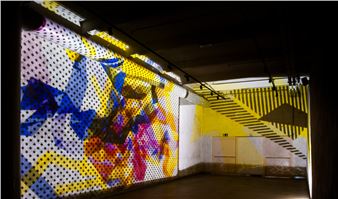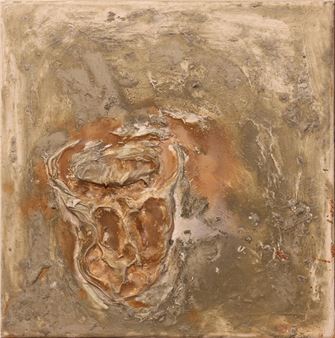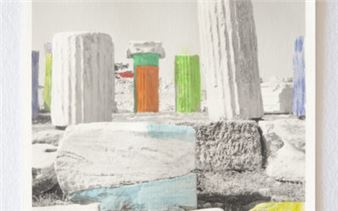Personal Prehistories
Only a couple of centuries ago, the idea of prehistory had not been properly formulated. As Colin Renfrew noted in the introduction to his Prehistory: The Making of the Human Mind (New York: Modern Library, 2008), European scholars mostly followed the arguments of the seventeenth century scholar Archbishop Ussher, who had calculated that the earth was created in 4004 b.c.e., a claim based on the ages of characters appearing in the Old Testament. Many world cultures and literary traditions shared a relative disinterest for prehistorical time, or what we could describe as "deep" time. Most cultures are indeed founded upon views of the world and beliefs that explain "how" the world came to be, rather than exactly when or why. The inability to read beyond religious time frames, creation myths and the like was surpassed during the Enlightenment, and sparked by earlier astronomy studies such as those by Galileo and Copernicus.
Today, prehistory is a fact and, as a field of studies, it is remarkably young and alive. The existence of this infinitely expanded time stream has been not only scientifically validated, but painted in increasingly expansive and all-encompassing detail thanks to technologically advanced dating methods. After Relativity, time cannot be taken as a stable continuum but rather understood as connected to space, an elastic matter as pervasive as it is hard to grasp and, ultimately relate to. Where does that leave us as human beings? What time are we, so to speak, left with to experience or imagine, and where do individual notions of prehistory begin and end?
As an exhibition, "Personal Prehistories" was inspired by a group of artists summoning a sense of timelessness via archaic, archetypal forms and materials. From the kaleidoscopic textures found in petrified wood by Davide Zucco to the nuanced, stratified execution and geological suggestions of Ethan Greenbaum's vacuformed prints, to Kristen Jensen's ambiguously anthropomorphic, enigmatic glazed clay objects, and Joe Brittain's quasi-alchemical concoctions of juxtaposed natural and artificial matters, the artworks selected for this exhibition connect human experience to imageries that reference prehistorical time in a variety of forms and concepts.
Borrowing from Robert Smithson's 1968 essay "A Museum of Language in the Vicinity of Art," we could describe the works in "Personal Prehistories" as engendering an amorphous struggle between the stable and the unstable, a fusion of action and inertia dealing with present concerns while projecting them on a remote timeline, far beyond reach, melting into the horizon of unascertainable and uncompromisingly personal notions of history before history. The recurrent use (or evocation) of multifold, space-time scenarios, positions the works in a blind spot along the path to historically acquired notions of natural evolution, a no-go zone where the artists' inclination to universally-attuned, all-inclusive signs is formed and ideas can finally take shape.
Only a couple of centuries ago, the idea of prehistory had not been properly formulated. As Colin Renfrew noted in the introduction to his Prehistory: The Making of the Human Mind (New York: Modern Library, 2008), European scholars mostly followed the arguments of the seventeenth century scholar Archbishop Ussher, who had calculated that the earth was created in 4004 b.c.e., a claim based on the ages of characters appearing in the Old Testament. Many world cultures and literary traditions shared a relative disinterest for prehistorical time, or what we could describe as "deep" time. Most cultures are indeed founded upon views of the world and beliefs that explain "how" the world came to be, rather than exactly when or why. The inability to read beyond religious time frames, creation myths and the like was surpassed during the Enlightenment, and sparked by earlier astronomy studies such as those by Galileo and Copernicus.
Today, prehistory is a fact and, as a field of studies, it is remarkably young and alive. The existence of this infinitely expanded time stream has been not only scientifically validated, but painted in increasingly expansive and all-encompassing detail thanks to technologically advanced dating methods. After Relativity, time cannot be taken as a stable continuum but rather understood as connected to space, an elastic matter as pervasive as it is hard to grasp and, ultimately relate to. Where does that leave us as human beings? What time are we, so to speak, left with to experience or imagine, and where do individual notions of prehistory begin and end?
As an exhibition, "Personal Prehistories" was inspired by a group of artists summoning a sense of timelessness via archaic, archetypal forms and materials. From the kaleidoscopic textures found in petrified wood by Davide Zucco to the nuanced, stratified execution and geological suggestions of Ethan Greenbaum's vacuformed prints, to Kristen Jensen's ambiguously anthropomorphic, enigmatic glazed clay objects, and Joe Brittain's quasi-alchemical concoctions of juxtaposed natural and artificial matters, the artworks selected for this exhibition connect human experience to imageries that reference prehistorical time in a variety of forms and concepts.
Borrowing from Robert Smithson's 1968 essay "A Museum of Language in the Vicinity of Art," we could describe the works in "Personal Prehistories" as engendering an amorphous struggle between the stable and the unstable, a fusion of action and inertia dealing with present concerns while projecting them on a remote timeline, far beyond reach, melting into the horizon of unascertainable and uncompromisingly personal notions of history before history. The recurrent use (or evocation) of multifold, space-time scenarios, positions the works in a blind spot along the path to historically acquired notions of natural evolution, a no-go zone where the artists' inclination to universally-attuned, all-inclusive signs is formed and ideas can finally take shape.
Artists on show
Contact details


 ARTISTS
ARTISTS










